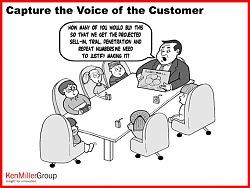Whimsy in the Front, and Corporate in the Back This week we were presented with a conundrum: Two fantastic website proposals from a fantastic firm Kobayashi Online.
Ruth and I tend to agree on most things, but sometimes I’m a little more “Whimsy” and Ruth is more “Corporate”. We also liked little bits of each website and seemed a bit torn in the middle. How could we make a rational and informed decision that took all of our criteria into consideration? We wanted Whimsy in the front and Corporate in the back: a Website Mullet!
Obviously this happens in organizations every day! Which option do we pick? Which logo is better? Which process improvement initiative do we start with first? An arbitrary decision can send the whole organization into a tailspin that doesn’t meet strategic objectives. How can we just say we “like” this one better, without having something to back it up?
We thought we’d take page from our own book!
Prioritize It!
A great tool that we teach to our clients is a prioritization matrix. In a few quick and easy steps you can prioritize projects, your to-do list, or even make decisions.
To download our free prioritization matrix email us at info@whiteboardconsulting.ca/staging and we’ll give you access to the prioritization matrix here.
Five Quick Steps to Building a Prioritization Matrix
Step 1: Update the Criteria across the top row to your specifications.
We brainstormed a few of our criteria, some of them were: our blog is featured prominently, the site is crisp, clean and uncluttered, our social media is highlighted, and authentic (was it really “us”?).
Step 2: Assign weighting to each criteria (best if you use 1,3,5).
Looking at all of them we assigned a weighted score of 1,3, or 5 to each of the criteria with 1 being the least important to us and 5 being most important.
Step 3: Score the items you are comparing (also use 1,3,5).
We then gave scores for each websites against the criteria. How well did each site meet our criteria?
Step 4: Calculate your total score.
The formula multiplies the criteria weight by the rated score and adds them all together for a total score.
Step 5: Apply a reality check and make sure things look realistic.
It’s as easy as 1.2.3……4,5. I bet you are dying to see our new website, aren’t you? Well we’ll be announcing our new site launch very soon. Stay tuned!!!
Let us know what you use our matrix for and how it helped you decide or prioritize a number of actions. Give us a shout via Twitter@whiteboardcons using #betterfastercheaper or email us at info@whiteboardconsulting.ca/staging.
Until next week!
Nicole





 In addition, our teaching is based on the Howard Gardner’s theory of “multiple intelligences”, which states that there are several types of learning styles (e.g. kinaesthetic, logical, intra-personal, visual/spatial, linguistic, interpersonal, etc). Our style is to ensure that each type of learner will find some portion of our agenda that resonates with them. By doing this, we reach every single student.
In addition, our teaching is based on the Howard Gardner’s theory of “multiple intelligences”, which states that there are several types of learning styles (e.g. kinaesthetic, logical, intra-personal, visual/spatial, linguistic, interpersonal, etc). Our style is to ensure that each type of learner will find some portion of our agenda that resonates with them. By doing this, we reach every single student.
 PI-301: Connect the Dots: Why Data is Important
PI-301: Connect the Dots: Why Data is Important




